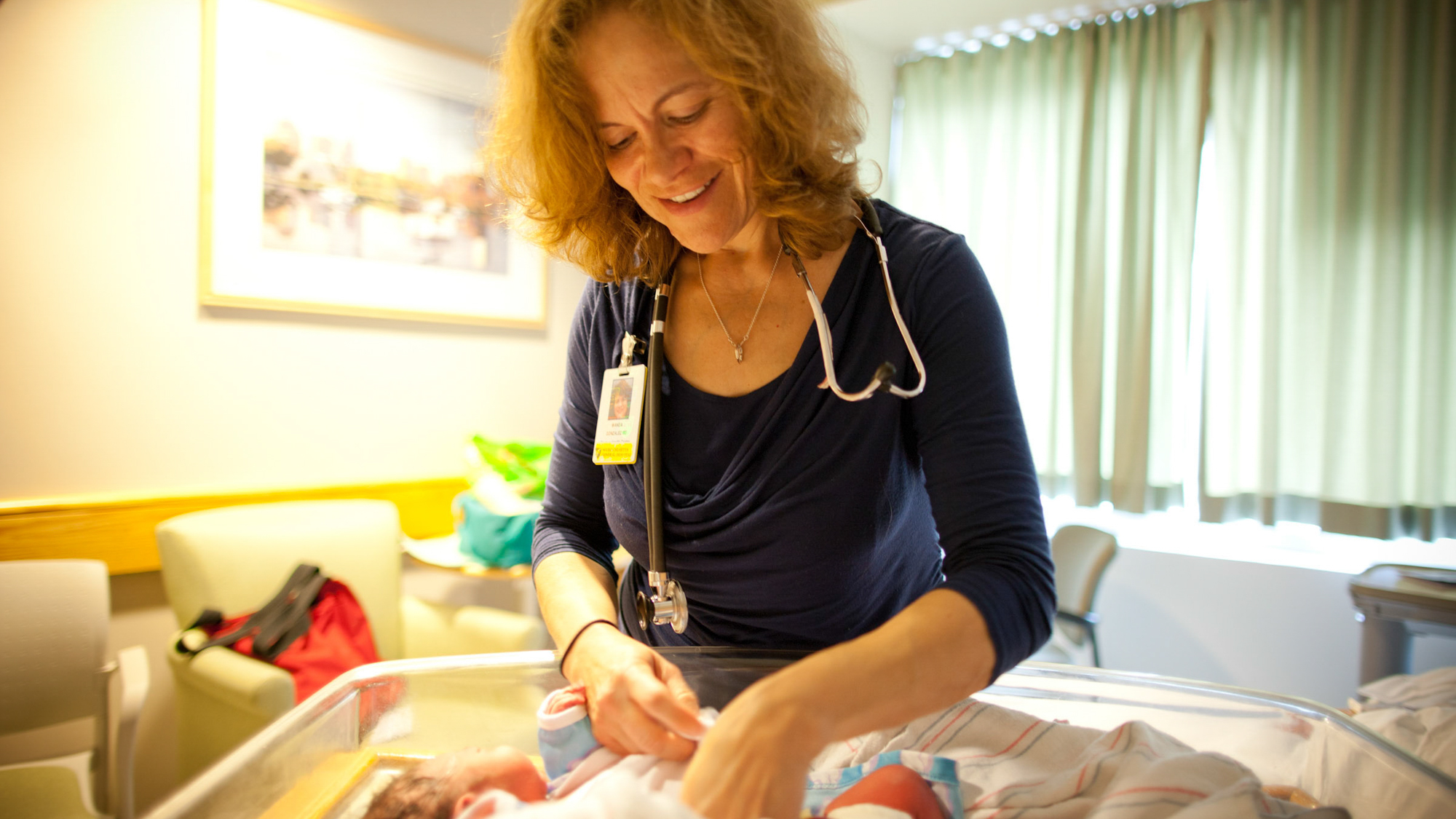Podcast
Cooling Brain-injured Babies to Reduce Disability, Liability
Jun 01, 2017

Duration: 7:37
This podcast is an episode of Patient Safety Updates (now Safety Net). You can find other episodes and subscribe using the links to the right.
Commentator
- Anne Hansen, MD, MPH
- Terrie Inder, MBCHB
- Carol Keohane, MS, RN
- Janet Lloyd, MD
Transcript
An advancement in the care of newborns is so profound that clinical and patient safety leaders at Harvard are pushing to spread its use in every-day practice. Research and recent experience show that some babies who show signs of brain injury suffered before or during birth have better outcomes when hospitals cool the baby’s body temperature.
Therapeutic hypothermia for the management of neonatal encephalopathy has been shown to reduce the risk of disabilities like cerebral palsy by up to 25 percent. But in order for this treatment to be effective, the newborn’s condition must be identified and treatment started within hours of birth.
The Harvard initiative comes through CRICO, the medical system’s malpractice insurance company. One component of CRICO is a federally-designated Patient Safety Organization (or PSO). This Academic Medical Center Patient Safety Organization PSO convened experts to develop guidelines for the identification and management of infants eligible for this new treatment.
Hypoxic ischemic encephalopathy, a subset of neonatal encephalopathy cases, is one of the largest areas of malpractice exposure for obstetrical providers. Thus, early identification and treatment of this condition has the potential for improving patient outcomes and reducing the risk of liability.
“So it really is an opportunity to take that research and in a much more rapid fashion and translate that into practice because we can bring all those stakeholders together in that deliberations phase.” Carol Keohane is Assistant Vice President of Patient Safety at CRICO.
Negligence claims involving newborns are among the most tragic and costly cases for any medical system, and this new treatment seemed right on point. CRICO noted that the new technique for cooling newborns with signs of encephalopathy was taking the typical slow track from research to wide use in clinical practice.
The guidelines came out of an effort to review cases with experts to see how to maximize the potential for improved outcomes. Keohane says the goal was to ensure that newborns are appropriately evaluated, receive the treatment within the recommended timeframe, are managed optimally, and transferred, if necessary.
Anne Hansen is a neonatologist at Boston Children’s Hospital who served on the clinical team of subject matter experts that developed the guidelines. Dr. Hansen points out that many babies are born in the community setting, and exposure to hypoxic or ischemic conditions is almost never known ahead of time.
“So I would say the big message of the guideline is that patients who may have developed intrapartum hypoxic ischemic encephalopathy need to be identified rapidly. They need to be assessed. They need to have passive hypothermia started as soon as the concern is raised and then they need to have a discussion with the Level 3 referral unit to discuss prompt transfer of the patient for active hypothermia.”
Dr. Terrie Inder is a neonatologist from Brigham and Women’s Hospital in Boston, and one of the guideline authors.
“So this treatment is extremely exciting at this time of life in that it has been shown to be so dramatically effective.”
Dr. Inder explains the front-line experience, using Celsius to indicate body temperature.
“It involves dropping the baby’s body temperature to 33 ½ degrees for three days, and the baby stays in a little body wrap or a little body blanket for three days and receives IV fluids and other types of support during that time period, and then after that, the baby is rewarmed and able to start feeding and doing all the normal baby things. So it’s a treatment that’s been shown to work, and it works well at exactly this temperature, at exactly this length of time, for this particular disorder only at this time in life.”
The reason the guideline team is optimistic it can change outcomes is simple: many of the clinicians that the recommendations target do not have much experience with the treatment. Dr. Inder points out that babies are probably the most difficult to assess for neurological impairment, because they can’t answer routine questions.
“When you try and translate that research into standard clinical practice, it’s important to have some guidelines that the clinician who is at the bedside can actually follow because the clinician who is at the bedside may not have been involved in the research studies and may not know all the data. So it’s very important to guide them.”
Janet Lloyd is a neonatologist from Mount Auburn Hospital in Cambridge who helped develop the guidelines.
“In a community hospital, I think a lot of it has to be based on knowledge.”
Dr. Lloyd has worked in several community settings, where doctors and nurses can apply leading edge treatments with the support of practice directions. She says that the guideline can eliminate the back-and-forth deliberations among clinicians, because the criteria for treatment with therapeutic hypothermia and the first steps are clear.
“If the folks in the delivery room are aware of the criteria for cooling, they will make quick decisions and good decisions. They won’t keep the radiant warmer on. They will not allow the baby to be sort of managed with observation if they know that the baby meets criteria for cooling, because that baby has to be into the Level 3, by six hours of age, which is a remarkably fast turnaround. From birth to under a different hospital’s care within six hours is remarkably fast. So, therefore, the efficiency of having guidelines on what drives that very rapid decision is very helpful.”
A unique aspect of this project to speed the use of new life-changing treatments, is that it was managed through CRICO’s federal designation as a Patient Safety Organization, or PSO. Under a PSO, member institutions are able to share experiences with each other through aggregated data analysis and nonidentifiable case review to improve practices at all institutions. Carol Keohane from CRICO explains the biggest advantage of using a PSO this way.
“It’s those emerging risks and those signals that we are able to see by everybody contributing to the PSO process in contributing cases that oftentimes it’s not an N of 1. Maybe an N of 1 in one organization, but when you collectively bring all members together and have them submit together, that N of 1 now may truly be an N of many. And then there are significant signals that can be gleaned from those events themselves and that analysis itself is pretty powerful to say ‘where do we need to go and what kind of an educational opportunity exists here?’”
Keohane says CRICO has recently awarded grant funding to promulgate these recommendations, and education efforts to spread their use. The guidelines, entitled “Therapeutic Hypothermia in Neonates,” is available on the CRICO web site at www.rmf.harvard.edu/guidelines.
About the Series
We’ve got you.
Our Safety Net podcast features clinical and patient safety leaders from Harvard and around the world, bringing you the knowledge you need for safer patient care.
Episodes
$1.5 Billion in Miscommunication: Medmal Data Report Finds Opportunities

Case Dismissed! Every Medical Defendant’s Dream Still Holds Some Nightmares

Expert: Communication Is Top Fix for Prostate Care Allegations


